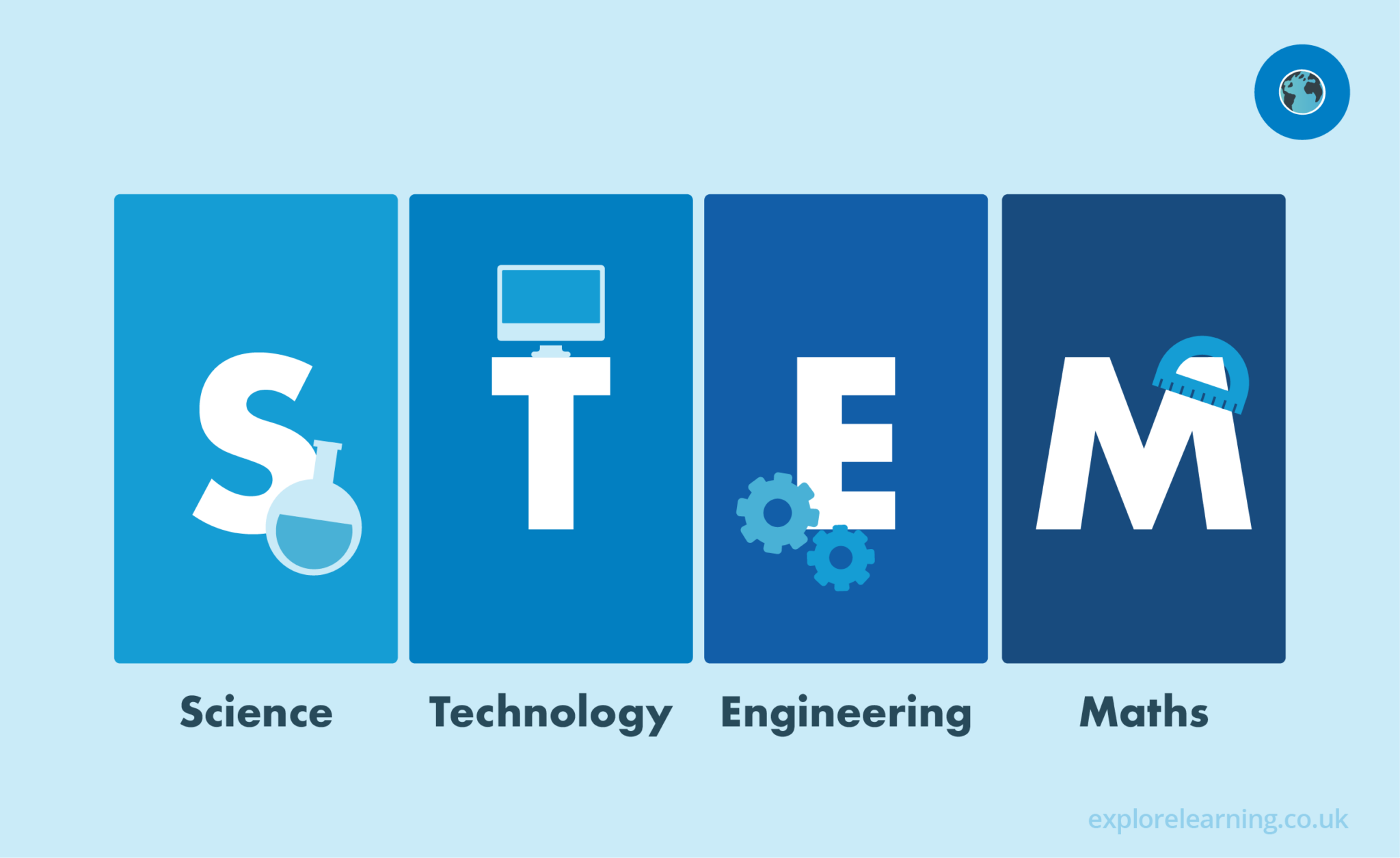The importance of STEM learning

Science, technology, engineering and maths are more and more becoming part of our everyday lives. So it’s easy to see how STEM learning has become an increasingly important part of children’s education.
Our lives are quite rapidly being changed by STEM innovations, from AI learning to medical science, the ways we connect with friends and family and the way that we produce our food. STEM touches almost every part of our lives these days, so it’s important for children to take part in STEM learning early to get a good understanding of the world around them.
What is STEM learning?

STEM learning includes four areas of study that are an intrinsic part of children’s education to understand the world around them, and give them the skills they need for a bright career once they finish school. Those four areas of study are:
Science
Technology
Engineering
Maths.
Maths could be considered the key link between these areas of study, as with good mathematical knowledge engineering, for example, would be easier to understand. That’s why it’s important that children get an all-around understanding of STEM. These subjects not only have a huge impact on our lives but understanding one subject area can be integral to understanding another.
Why is STEM education so important?
These days STEM can be linked to almost anything in our lives and on an almost daily basis, many of us rely on technology. And with the UK’s STEM skills shortage, it’s more important and beneficial than ever for children to become interested in STEM learning.
STEM learning can open up a pathway to a wide variety of exciting areas of study, get them excited about learning and provide them with the necessary skills to succeed in their futures. So let’s take a look at why STEM education is so important.
STEM impacts everything
In an increasingly technical society, an understanding of STEM learning is so important for children from an early age. From transportation to communication and even food production, STEM makes up the backbone of our society these days. An understanding of STEM learning early on will open up amazing opportunities for your child, and allow them to better understand the world around them.
Develops problem-solving skills
Even if your child doesn’t actively pursue a career in STEM after school, the scientific mindset developed by STEM learning can really help with their problem-solving skills. STEM learning is about using maths and science to tackle real-world problems. Children are encouraged to use their own creativity and curiosity to do research, run tests and design solutions.
The research-based and analytical approach of STEM learning teaches children invaluable skills that can be put to use across a variety of industries. It’s important to nurture these skills early on so that children can start to understand how to apply that problem-solving knowledge elsewhere.
Encourages language development
While your child’s English learning is mostly done in their English classes, a lot of language development can be encouraged in STEM learning. That’s because STEM learning encourages children to do independent research, reading and writing, as well as discuss hypotheses as part of projects and investigations. These aspects of STEM learning test children’s literacy, vocabulary and spoken language skills. So STEM learning can actually play a crucial role in your child’s language development, even if they don’t choose to pursue STEM careers after school.
How does STEM improve children’s learning?
An understanding of STEM can have a huge impact on your child’s day-to-day life and can be a necessity for understanding the world around them. We’ve talked about how STEM learning can develop good problem-solving skills and encourage language development, so let’s take a deeper look at how STEM education can improve your child’s learning.
Encourages critical thinking
As children go through their education it’s important that they learn and develop good critical thinking skills, as these skills can be useful in any subject and almost any aspect of their lives.
STEM learning teaches children the importance of keeping an open-minded and curious approach, while also understanding how to research and evaluate information. Children are encouraged to ask questions to gain a better understanding of something and develop a growth mindset. Rather than just learning and gathering knowledge, children are encouraged to put the information they learn into practical use.
Teaches them to connect core subjects
STEM isn’t just one subject, it covers four areas of learning. However, those four areas, science, technology, engineering and maths are all linked together. With STEM learning children are taught to take a more holistic approach to learning, and understand that a good understanding of maths can help with engineering or scientific study can be an important part of learning about technology.
STEM learning teaches children to connect these four different subject areas, and can encourage children to take that learning elsewhere. For example, language development – as children research, hypothesise and discuss their ideas in STEM learning, their language skills are tested and developed.
Makes learning exciting
STEM learning opens up a world of possibilities for children. Understanding STEM is vital for understanding the world around them, as we become more dependent on technology. That’s what makes STEM learning so exciting – it allows children the opportunity to question the world around them and do engaging research that helps them develop an understanding of STEM. STEM encourages creativity and experimentation, so children aren’t always just gathering knowledge and reading textbooks to learn. Instead, STEM can often be taught in practical ways, letting children get hands-on. For example, working on engineering projects can make maths learning fun and science can be made exciting through chemistry experiments.
How to get your child interested in STEM learning
So how can you get your child interested in STEM learning?
The best way is to start early. While your child is still developing and in their early years, you can provide them STEM toys that make learning into an exciting game
You can come up with everyday examples of maths. Things like cooking and baking can teach children about measurements, and can also be an important opportunity to teach children about practical scientific knowledge like food safety, and how (and why) certain ingredients react with each other while making meals
Work on crafts together that encourage children to practise their mathematical and technical knowledge. Things like sewing projects or building kits can be a great way to get children having fun with STEM learning
Let children have some downtime while still working on their development and even doing some STEM learning without realising it. An interest in video games, believe it or not, can actually encourage children to develop an interest in how they’re made; the coding and technology behind them and everything that leads to that final product. Even if just for the time being they provide a nice outlet for children to unwind.
STEM learning and tuition
We understand the importance of developing children’s curiosity and excitement for education, which can encourage their STEM learning in school. At Explore Learning we know it’s important to make learning fun for subjects like maths so that children can really engage and develop the crucial skills they need to understand the world around them.
Our expert tutors get to know your child and the best way to teach them according to your child’s learning style. Your child can then take the healthy learning habits they pick up with us and apply those skills to their STEM learning in school.
Why not see if tuition could help your child with their STEM learning?
Cancel anytime
No joining fee
In centre or online
Memberships to suit you
Cancel anytime
No joining fee
In centre or online
Memberships to suit you
Cancel anytime
No joining fee
In centre or online
Memberships to suit you




